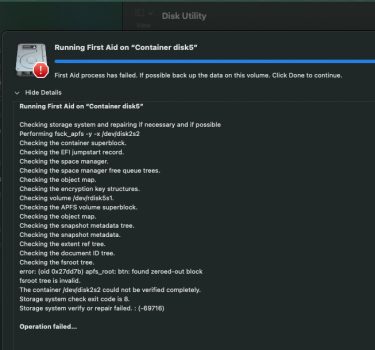2009 Mac Pro that's been flashed to 5,1 and is currently running Catalina Patcher.
I'm trying to upgrade to either Big Sur or Monterey but cannot get the installer to complete. I have OpenCore installed on the machine as I am using a different graphics card than the original. Here's a summary of what happens:
If I boot the installer from the USB Opencore, I get the welcome screen, install, it reboots, then boots into a circle cross with "support.apple.com" across the bottom screen.
If I boot the installer with the system OpenCore, I get the same issue before the system boots. Occasionally it will begin booting but will freeze.
If I carbon clone my Big Sur HDD I have running on my 2012 Mac Mini, the Pro simply refuses to see it as a bootable device even in opencore.
Please for the love of God someone tell me there's a solution. I'm about ready to chuck this thing, but I wouldn't throw it far because it weighs so much.
I'm trying to upgrade to either Big Sur or Monterey but cannot get the installer to complete. I have OpenCore installed on the machine as I am using a different graphics card than the original. Here's a summary of what happens:
If I boot the installer from the USB Opencore, I get the welcome screen, install, it reboots, then boots into a circle cross with "support.apple.com" across the bottom screen.
If I boot the installer with the system OpenCore, I get the same issue before the system boots. Occasionally it will begin booting but will freeze.
If I carbon clone my Big Sur HDD I have running on my 2012 Mac Mini, the Pro simply refuses to see it as a bootable device even in opencore.
Please for the love of God someone tell me there's a solution. I'm about ready to chuck this thing, but I wouldn't throw it far because it weighs so much.



